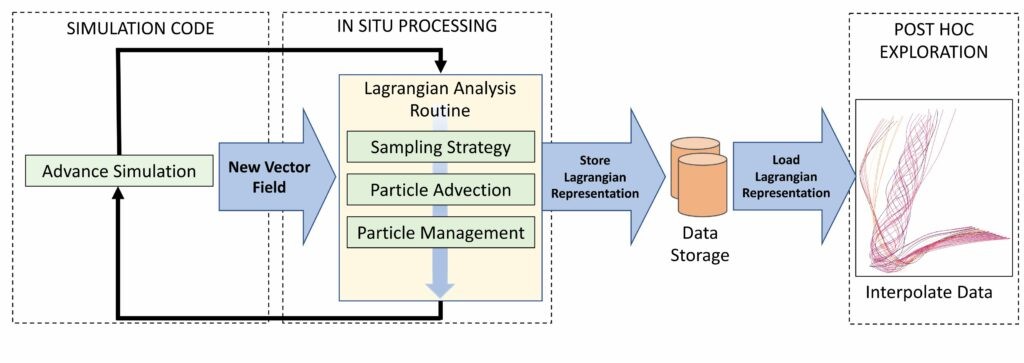A team of researchers working with the Exascale Computing Project has completed the first real-world demonstration of the effectiveness of Lagrangian analysis techniques for reducing data size and storage needs while ensuring accuracy for post hoc exploratory analysis and visualization of time-varying vector fields. They showed that Lagrangian representations computed with in situ processing deliver high data reduction options and data reconstruction accuracy. Previous work has involved strictly theoretical and proof-of-principle demonstrations. The team’s work was published in the February 2022 issue of the Journal of Computational Science.
To manage the large datasets generated by simulations, scientists have begun implementing temporal subsampling and lossy compression, and these approaches tend to limit analysis to individual time slices. The researchers tested Langrangian analysis techniques’ viability to deliver data reduction to ease performance bottlenecks by leveraging runtime in situ infrastructure that enables straightforward extraction via APIs. They integrated Lagrangian analysis routines with the simulation code using the Ascent in situ infrastructure and then leveraged the VTKm scientific visualization library to perform particle advection to compute a Lagrangian representation. The team also considered the use of both GPU and CPU parallelism to accelerate particle advection, studied multiple application codes, and evaluated various scales of compute nodes and analysis workloads. The team tested their techniques on previously unexplored cosmology and seismology applications and conducted a performance benchmarking study using a hydrodynamics mini-application, resulting in data reductions of less than 1% of total data via Lagrangian representations and encumbrances of under 10% in 90% of experiments.
The researchers envision proving the usefulness of Lagrangian techniques with large-scale transient flow analysis for a broad range of scientific simulations. Follow-on work involves exploring the use of reduced Lagrangian representations computed via in situ processing as training data for machine learning models and the prediction of trajectories and associated uncertainty. Reduced Lagrangian representations are also being used to support interactive exploration tools resulting in state-of-the-art flow visualization techniques.
Sudhanshu Sane, Chris R. Johnson, and Hank Childs. “Demonstrating the Viability of Lagrangian In Situ Reduction on Supercomputers.” 2022. Journal of Computational Science (February). https://doi.org/10.1016/j.jocs.2022.101615.


